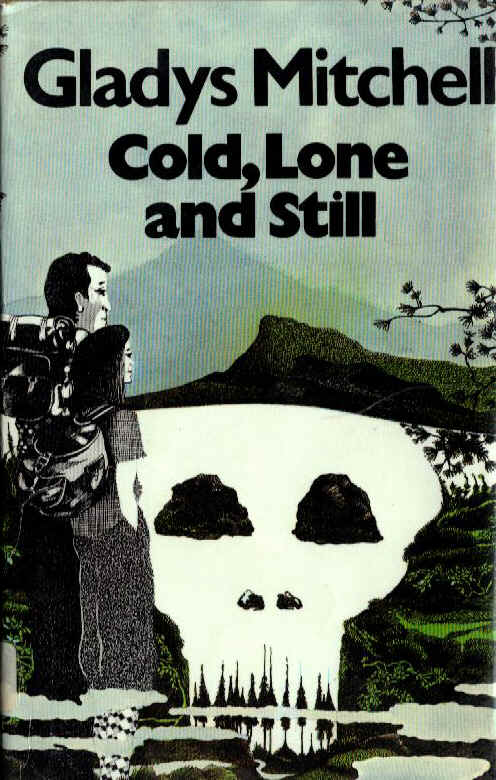 Comrie
and Hera are planning to marry but, before taking the risk of
setting up as legal life-partners, they decide on an unusual test
of compatibility: they embark on a long, sometimes arduous
pilgrimage along part of Scotland’s West Highland Way.
Comrie
and Hera are planning to marry but, before taking the risk of
setting up as legal life-partners, they decide on an unusual test
of compatibility: they embark on a long, sometimes arduous
pilgrimage along part of Scotland’s West Highland Way.Cold, Lone and Still (1983)
1983 Michael Joseph blurb:
 Comrie
and Hera are planning to marry but, before taking the risk of
setting up as legal life-partners, they decide on an unusual test
of compatibility: they embark on a long, sometimes arduous
pilgrimage along part of Scotland’s West Highland Way.
Comrie
and Hera are planning to marry but, before taking the risk of
setting up as legal life-partners, they decide on an unusual test
of compatibility: they embark on a long, sometimes arduous
pilgrimage along part of Scotland’s West Highland Way.
The fact that such a project is thought necessary indicates that doubts exist—and matters are not helped when, lost on the moors in a heavy mist, they come upon the corpse of a murdered man.
On the Way they have made the acquaintance of a group of other walkers and, when the holiday is over, a reunion party is held in London. During the proceedings, another murdered body is found, and the second crime appears to be a replica of the first. None of those present at the party is exempt from suspicion.
After making a wrongful arrest, the police are baffled, and it requires the intervention of the eminent and indefatigable psychiatrist Dame Beatrice Lestrange Bradley before the guilty person is identified.
<>My review:
<>It is a pleasure to be able to report that this story of walkers in Scotland’s West Highland Way—posthumously published a month after Mitchell’s death—is sound and well put together, with genuine detection and clues.The story is told in the first person by one Comrie Melrose, a literary agent and victim of the second sight—“the kind of sensitive plant that dreams dreams and sees visions”, walking the Way with his fiancée, Hera, in a test of their compatibility, as Hera believes that “a walking tour in hilly and often lonely country, with mishaps occurring daily, weary legs, blistered feet, rain, wind, mist and losing our way, would be the best means of discovering whether a partnership for life would be a viable proposition”. The reader knows from the beginning that the proposed marriage is a failure, both in the prologue and in Comrie’s self-mockery: “Hera and I could expect to have our ups and downs, a rough passage at times, frustrations and disagreements, but there would also be compensations, ‘port after stormy seas’, a benign providence somewhere in the offing, the isles of the blest for a safe anchorage at the end of the day. How one deceives oneself!”
It is, however, not the dangers of the walk that annoy, but the discovery of a dead body in a cottage on Rannoch Moor, “that wilderness of peat-bogs, water, heather and evil repute”. They fail to report the corpse out of fear for incurring suspicion, as they believe that the body is that of an acquaintance, but later find to both their and the reader’s surprise that the acquaintance is not dead—a discovery causing them to flee “as it were, from a disembodied spirit and terrified, so far as I myself was concerned, not for my life, but for my reason”.
The fear of insanity—and, like the earlier Sunset Over Soho, of how much the reader can trust the narrator—soon increases with Comrie’s discovery of a second body in a passage—this time the rightful body of the acquaintance, a man “more sociable than a plague o’ gnats”. Comrie’s terror—his sense of inability to cope with the horrible situation—is shown both through his dreams (which, like those of Here Lies Gloria Mundy, contain hidden clues to the truth) and through his feeling of being “in the throes of a nightmare and wonder[ing] how soon I could wake myself out of it… But, of course, it was not a nightmare, but a stark and dreadful reality”. What Mitchell has created, then, is a paranoid thriller, executed in her own unmistakable style, with a hero who is “a classic case of E.S.P. and meat and drink to a psychiatrist”.
That psychiatrist is, of course, Dame Beatrice Bradley, who takes a relatively minor rôle, although she solves the crime, mainly through one of Mitchell’s patented ‘name’ clues. “‘The proper study of mankind is man’, and the study of man includes the language he uses to disguise (we are told) his thoughts,” as she points out. The solution is satisfyingly neat and well-clued, competently done, and showing that Mitchell still had control even at the end.